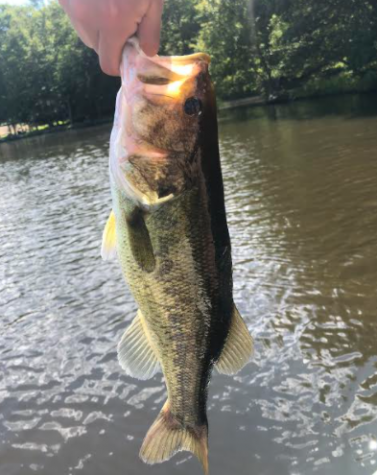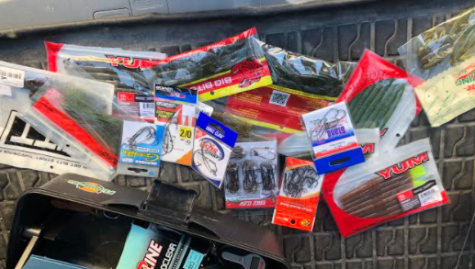Fishing in the Spring: Some Tips for a Good Catch
As warmer weather comes around, one of the most popular recreational activities is in full swing. Fishing has become more and more popular as the years go on. In 2019 alone, over 50 million Americans partook in fishing and 39 million people fished freshwater. This number also increased due to the coronavirus pandemic. Many new fishermen casted their rods in for the first time last year. Casting a rod may not always result in a fish on the other end. Here are some tips for fishing in the spring and early summer.
Getting the right line- You cannot catch a fish without fishing line. There are many types of line when you go to the  tackle shop. What factors should you take into consideration when buying a line? You should think about the time of year, area you are fishing, depth of the lake, and size of the fish. During the springtime, there is not much vegetation growing in the water. When the sun is out, this makes for the water to be more visible. Surprisingly fish can see certain types of fishing line that can be in the water. I always go for a clear line in the spring which makes it harder for the fish to see. Also, I would recommend a line that has low fishing pounds. Since there is little vegetation growing, there is no need to have a strong line. The stronger the line the larger it is, thus making it more visible. Jake Tarburton, who is an astonishing fisherman, uses braid. Tarburton loves using braid because “it never gets tangled, it is super strong, and it blends in with the water well”.
tackle shop. What factors should you take into consideration when buying a line? You should think about the time of year, area you are fishing, depth of the lake, and size of the fish. During the springtime, there is not much vegetation growing in the water. When the sun is out, this makes for the water to be more visible. Surprisingly fish can see certain types of fishing line that can be in the water. I always go for a clear line in the spring which makes it harder for the fish to see. Also, I would recommend a line that has low fishing pounds. Since there is little vegetation growing, there is no need to have a strong line. The stronger the line the larger it is, thus making it more visible. Jake Tarburton, who is an astonishing fisherman, uses braid. Tarburton loves using braid because “it never gets tangled, it is super strong, and it blends in with the water well”.
When picking bait, it is important to know what type of fish you are trying to catch. The basic idea of using worms does not work for all fish. Larger fish like Carp do not want worms, Instead, they like corn or bread. Trout like worms and other types of creepy crawlies. Rubber worms are my favorite types of bait to use. They primarily are used for bass fishing. There are many different designs and sizes ranging from three-inch green worms to eight-inch purple worms. During the springtime, the water is still cool. Fish in colder water have slower metabolism which also translates to them moving and eating at a slower pace. Do not use faster moving baits because it may be hard for the fish to swallow it. Bobby Croyle, who is one of the best fishermen in the area and runs a social media account for fishing, has gear for all types of fish. His best tip for spring fishing is to fish where the warmer water is and use slow moving baits. “Bait fish go where the sun is and where there is bait fish there are hogs.” Bobby explained.
worms. During the springtime, the water is still cool. Fish in colder water have slower metabolism which also translates to them moving and eating at a slower pace. Do not use faster moving baits because it may be hard for the fish to swallow it. Bobby Croyle, who is one of the best fishermen in the area and runs a social media account for fishing, has gear for all types of fish. His best tip for spring fishing is to fish where the warmer water is and use slow moving baits. “Bait fish go where the sun is and where there is bait fish there are hogs.” Bobby explained.
The correct way of holding and putting back fish is something that can easily be done. Many new fishermen do not take proper care of the fish they catch. When holding a fish, wet your hands with the water. Fish have a slimy coat that protects them from parasites. Our dry hands take that slimy coat off and weaken the fish’s defense against parasites. Also, hold the fish in a vertical or horizontal line. Holding fish at an angle can cause damage to the jaw and body. Lastly, when putting a fish back gently acclimate it to the water. Do not just throw the fish. This can cause shock and sometimes damage or in rare cases death to the fish.
Before you go out, remember to buy a fishing license. They cost $23 and can be purchased online, or in person at places such as Walmart, or your local bait and tackle shop. You can face fines and potentially jail time for fishing without a license.
Catching a fish can take a lot of time. Jake Tarburton explained it best when he said, “Sometimes you go fishing for hours and catch nothing, but when you do catch a fish, it can be the most rewarding feeling”. Fishing takes patience and some skill. Do not lose hope if you have not caught fish that hour, that day, or even week. The best fishermen do not always catch fish. Enjoy and stay safe while fishing.
Joey Poust is a senior at Pennridge High School. Joey likes to play basketball, fish, and ski. His goals are to travel and serve his country.









